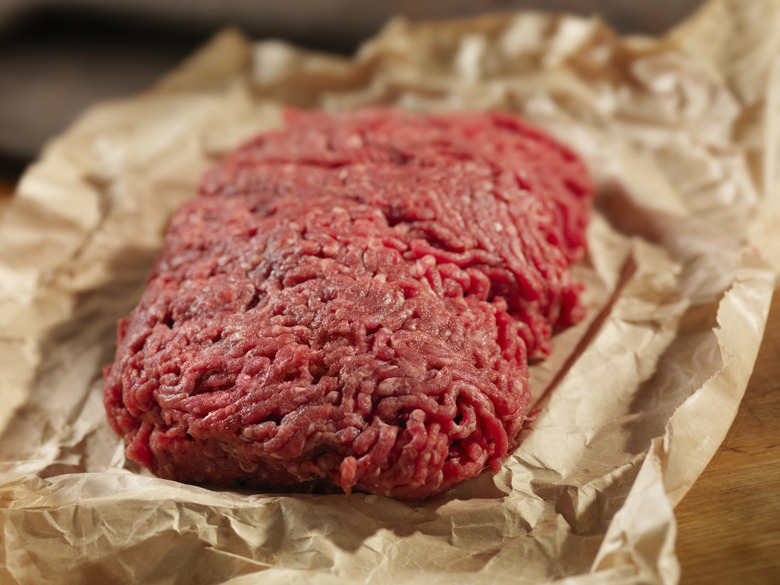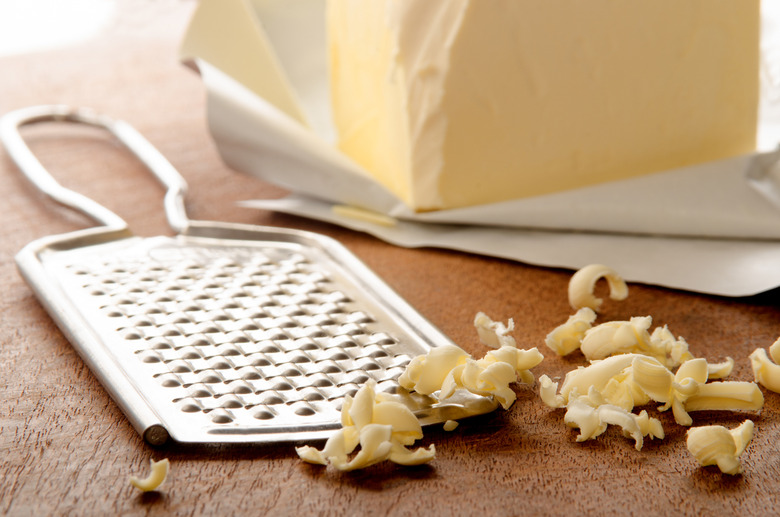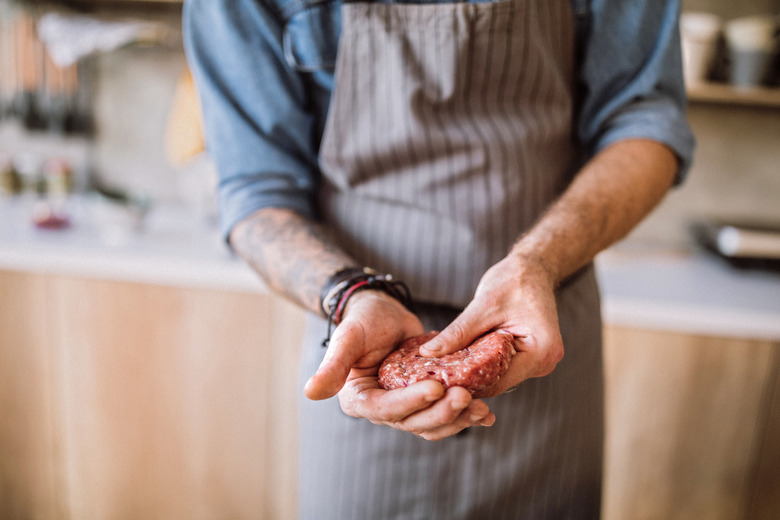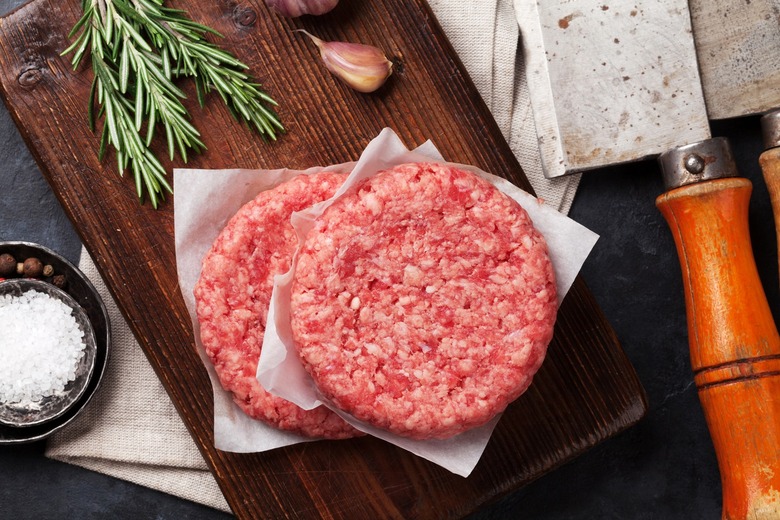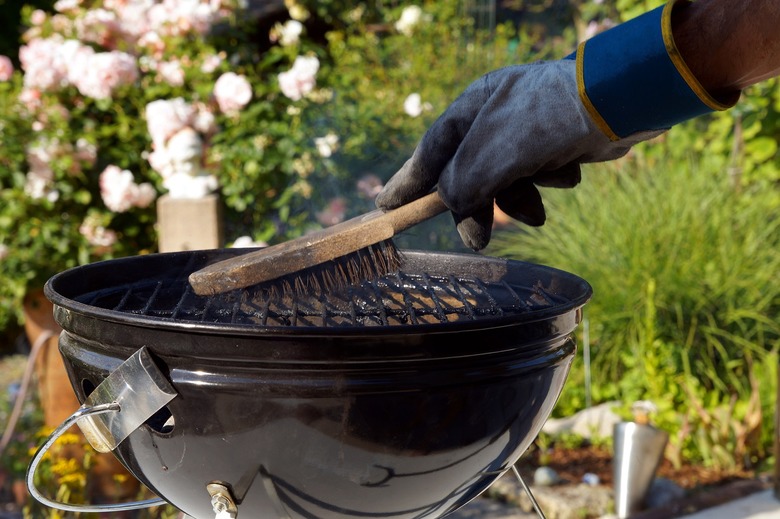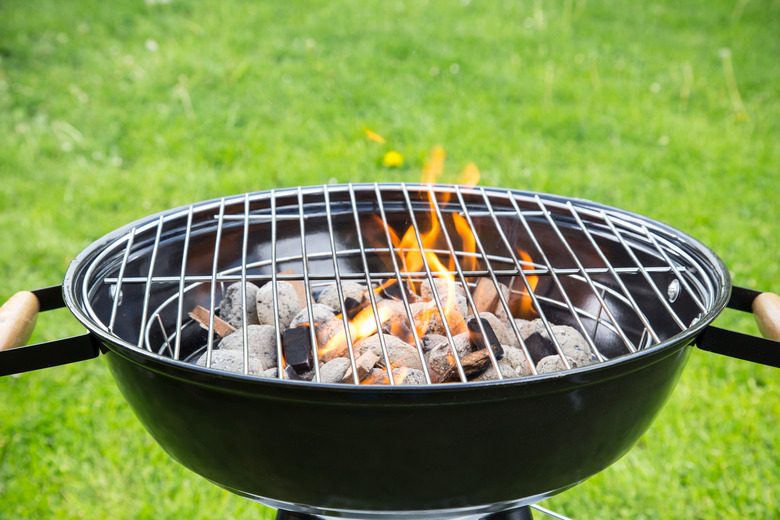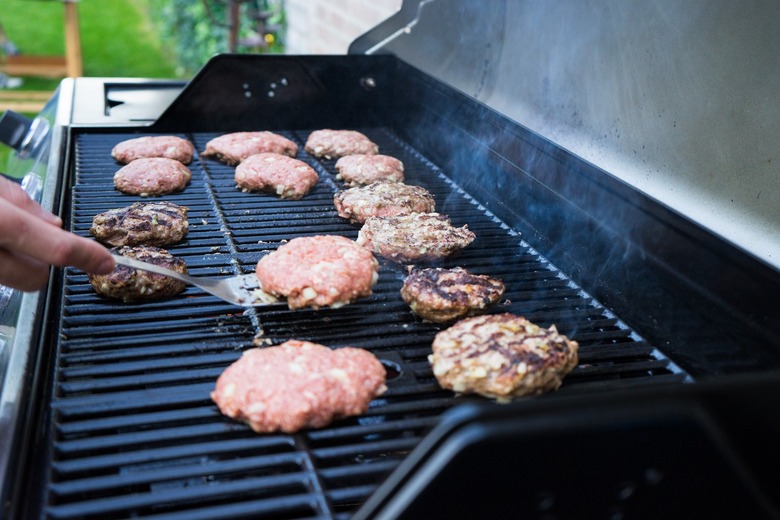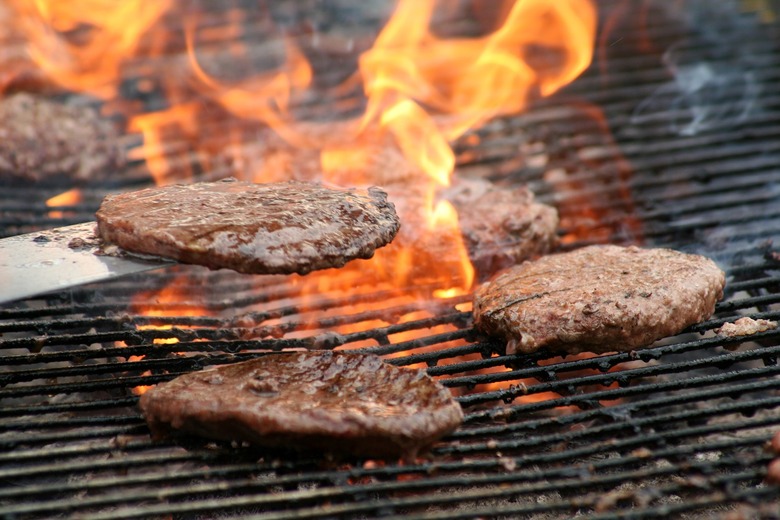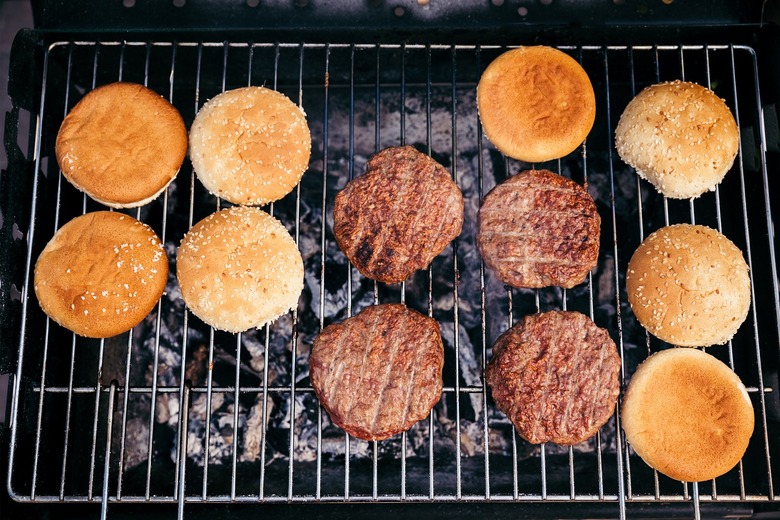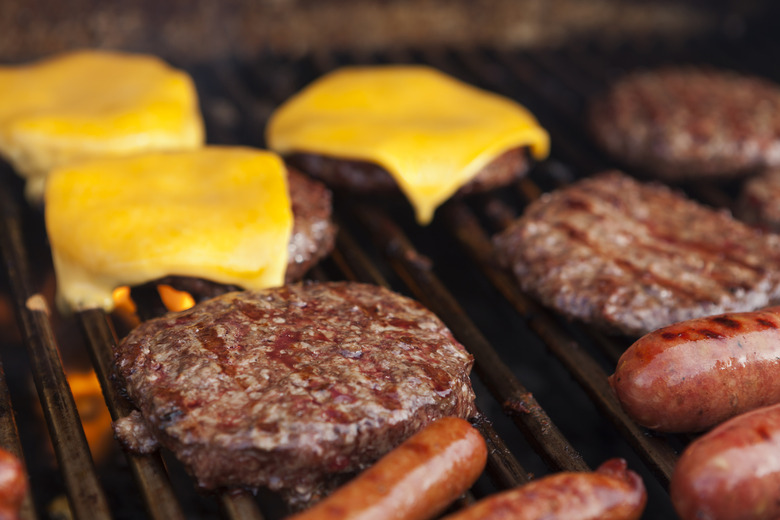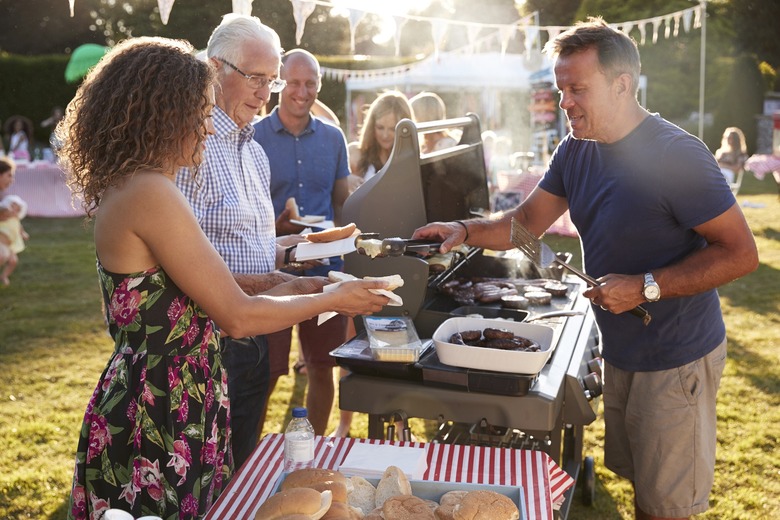How To Grill Burgers: Tips And Tricks For The Best Patties Ever
It's that time of year — the sun is out, the weather is warming up and you finally have a reason to break out the grill in your backyard. While there are so many great dishes to cook on the grill, few things beat a backyard burger.
Now, maybe you're a tong-twirling grill master who makes your own marinades from scratch , but if you're like most folks, your grill skills may be a little rusty after a long, cold winter and a gray, dreary spring. Though burgers seem like they should be easy to cook on the grill, there are some tips and tricks you can use to ensure you have a restaurant-quality patty on your bun.
Use cold ground beef
While one of the best tips for grilling steaks is to bring the meat to room temperature, the best way to cook an average-sized burger patty is straight from the fridge. By cooking from cold, you allow the burger the chance to develop a lovely crust while getting the center to that desirable medium-rare.
Mix in butter, not seasonings
Beef patties loaded with onion, herbs and even eggs may be fairly common, but it's important to remember that you're making burgers, not meatloaf (but if you want to make meatloaf, here's how). All you need to mix in is butter. Why? It adds moisture and fat. For every 1 1/2 pounds of beef, grate 1 stick of cold, unsalted butter into the mixture using a box grater.
Don’t overwork the meat
Some people behave as though the ground beef destined to become burgers has personally affronted them and needs to be wrestled back into submission. But really, the less you handle the meat, the better. Instead, mix it just enough to form the perfect patty by gently tossing it from hand to hand and flattening the patty until it's a little less than 1 inch thick. Then, make an impression in the center of each patty with your finger to ensure it doesn't break while cooking.
Season the burgers liberally
Don't salt the burgers before they are formed into patties — that causes the muscle proteins to dissolve, resulting in a patty that has a texture more like a sausage than a burger. Instead, season liberally and evenly with salt and pepper just before going to the grill. Sprinkle the salt from a height of about six inches to achieve an even layer and use more salt than you think you need. There's a reason restaurant food tastes better than yours, and it has a lot to do with salt and butter.
Use a clean grill
Make sure your grill is clean before you start grilling; doing otherwise is one of the biggest rookie grilling mistakes. If the bars are clogged with crusty remains from last year's barbecue, it's impeding the heat transfer between flame and food. Use some elbow grease and scrub that grill! You can use half an onion on a meat fork, but if your grill is really gritty, break out that brush with stainless steel bristles.
Heat your grill with ‘zones’
You need to grill at the correct temperature. If it's too hot, your burgers will burn on the outside and remain raw on the inside. If it's too cold, they'll stick to the grill, dry out and develop an unappetizing gray color. The best approach is to have a hot zone (with more coals) and a cooler zone (with fewer coals) for more indirect heat. Start your burger in the hot zone to achieve a perfect crust and then move them to the cooler zone if they develop too much color too quickly.
Wait to flip
There's a feeling that you always need to be doing something when cooking, but after you put the burgers on the grill, close the lid and let them cook before flipping. When should you flip your burger? Midway through the cooking process, or after about four or five minutes. You'll know it's time when the burger has developed a crust and is no longer sticking to the grill.
Avoid flare-ups
The fat from the butter may cause some flare-ups. Sure, it may impress your guests to see you casually cook burgers amid bursts of flame, but it isn't doing your burgers any good. Encouraging flames is essentially encouraging an acrid charcoal flavor, which definitely won't wow your friends once they bite into your burgers. If flare-ups happen, move your burgers to a more indirect heat source.
Seriously, let the burgers be
A lot of the best burgers in America and burgers at fast food chains are "smashed," but this technique is best done on a flat griddle. When patties are flattened on a grill, any potential juiciness literally escapes through the grates. Leave the smashburgers to, well, Smashburger, and let your burgers cook, plump up and get nice and juicy.
Add cheese at the last minute
When should you put cheese on a burger? At the last minute ... literally. Cooking a burger is easy — it's about four or five minutes per side. So after eight or nine minutes of cooking, lay that cheese on the patty. Whether you use American, cheddar, Swiss, Monterey Jack, bleu cheese or something else is entirely up to you!
Serve the burgers immediately
Because burgers are made of ground meat rather than intact muscle, the longer they sit, the more juices will run out, leading to a burger that's drier than desired. So hurry up, put that patty on a bun and dig in. Now that you know all the secrets to making the best-ever grilled burgers, take these tips and tricks and apply them to our 50 best burger recipes.
More from The Daily Meal:
10 Beef Recipes Beyond Sloppy Joes and Bolognese
The Most Popular Grilling Questions in Every State
Sandwich Recipes Worthy of the Dinner Table

